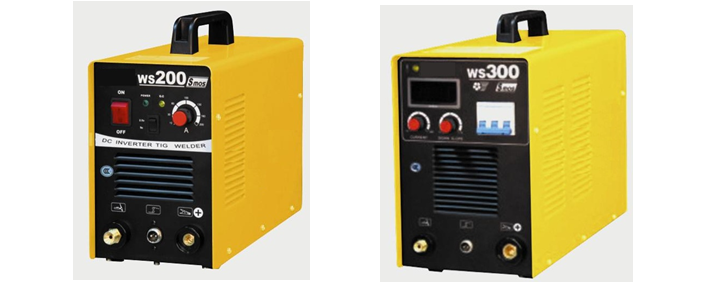Getting Started with a Tig Welding Machine
Getting started with a Tig Welding Machine may be an overwhelming task. With so many options available, how do you know which one is right for you? Learn about the Lift-Arc Ignition, shielding gas, and Accelerator pedal to get started. Also, check out the Argon regulator. These are some of the most important parts of a Tig Welding Machine.
Lift-Arc Ignition for Tig Welding Machine
The Lift-Arc Ignition is an essential part of your welding machine. It is the feature that enables the current to flow when the electrode is placed close to the workpiece. When the electrode is close to the workpiece, the Lift-Arc will ignite the welding current, allowing the weld to move to the next step. Unlike other types of ignition, the Lift-Arc is easy to operate and user-friendly.
When using a Lift-Arc Ignition TIG Welding Machine, the tungsten must contact the base metal rapidly and immediately afterward, which is called a “lift” start. Because of this, the initial current given by a TIG welding machine is usually low, avoiding the tungsten rod sticking to the workpiece. Once the tungsten rod has successfully touched the base metal, the machine’s sensor will give the full welding current.
Shielding Gas for Tig Welding Machine
When choosing the correct shielding gas for your Tig welding machine, it is important to understand the differences between the different types. The basic gas used in MIG/MAG welding is argon, but helium can improve penetration and fluidity. Both gas mixtures are suitable for welding all types of steel, including mild steel. For certain stainless steel grades, small amounts of hydrogen can be added. Here’s how to determine which gas is best for your welding project.
The presence of CO2 can make the arc erratic and cause the weld to burn. Without proper shielding gas, the weld will burn and develop cracks and holes. Argon gas is the most suitable gas for TIG welding. Some metals require a mixture with helium, but plain argon is best for most metals. This type of gas is less expensive than other types of welding gas.
Accelerator Pedal for Tig Welding Machine
A foot pedal for a TIG welder can be a useful accessory. These foot pedals can increase the amperage of the welding machine by activating the gas contactor. This machine accessory is manufactured in the USA and tested to one million life cycles. The manufacturer guarantees the quality of the product and provides a 1-year warranty and satisfaction guarantee. If you’re considering purchasing an accelerator pedal, here are some things to consider.

Firstly, the pedal has two positions: an on position and an intermediate position. The start switch on the pedal will activate the welder when the pedal is in the activation position. The accelerator pedal also features a start switch. When the start switch is in the deactivation position, the arc is terminated on the electrode. The accelerator pedal is normally in the middle position. It should be used when you are using the machine to weld metal.
Argon Regulator for Tig Welding Machine
An Argon regulator for a tig welding machine is a great investment for any metalworking shop. Not only can it prevent accidental over or under-inflation, but it can also keep a tight lid on the argon gas supply, preventing the risk of explosions. This regulator can be adjusted to control the flow volume and can be used with both CFH and Argon gas cylinders. The output flow can be adjusted from 0 to 25 lpm, and a movable ball indicates the output pressure. Lastly, this regulator can be used for both TIG welding and MIG welding.
An Argon regulator is important for every MIG or TIG welding machine, regardless of its brand. Argon cylinders are usually sold separately, and are necessary for successful welding. Luckily, a few companies have created specialized Argon regulators for TIG welding. These regulators can be used in a variety of settings and are affordable and reliable. These regulators come with a high-quality argon tank and CGA-580 inlet connection.
Inert Tungsten Gas for Tig Welding Machine
Using the Tungsten Inert Gas (TIG) welding process produces welds of high quality. This process begins by forming a pool of molten metal, depending on the electrode size and generator current. The arc is then surrounded by an inert gas shield to protect the non-consumable electrode. The welding process can be either autogenous or manual, as filler material can be added to the existing pool. The weld process also produces high-quality welds on a wide range of materials.
Inert gas shielding gas is essential when using TIG welding. There are a number of reasons for a shielded gas. Inert gas is a vital safety consideration, and this gas shield can reduce the risk of explosions and minimize the possibility of a melted workpiece. It also protects the electrode from atmospheric contamination. By shielding the weldpool from oxygen, the welding process is much safer and more efficient.
- How Radial Drilling Machines Achieve Low Vibration and Distortion Resistance?
- How Feed Rate Adjustments Improve Surface Finish in Vertical CNC Milling Machines?
- How Chamfer Machines Are Streamlining Metalwork in the UK’s Manufacturing Sector?
- How Lathe Machine Manufacturers are Powering the Nation’s Engineering Growth in Canada?
- From Design to Execution: How CNC Press Brakes Ensure Seamless Workflow
- How to Optimize Sheet Metal Operations Using a Hydraulic Press Brake?


